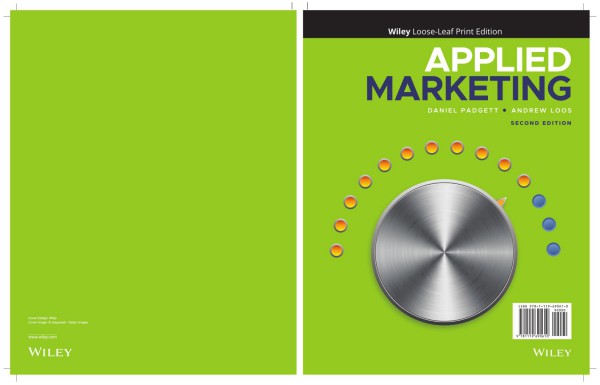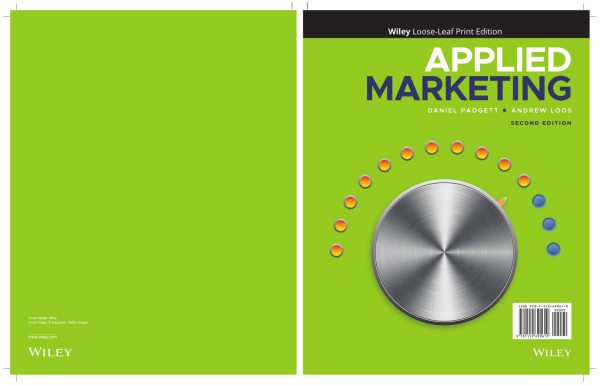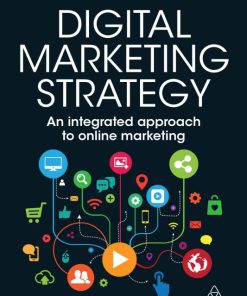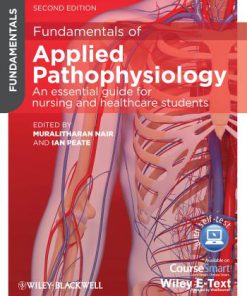Applied Marketing 2nd Edition by Andrew Loos,Daniel Padgett 9781119690566 1119690560
$50.00 Original price was: $50.00.$25.00Current price is: $25.00.
Authors:Daniel Padgett, Andrew Loos , Series:Management [529] , Author sort:Daniel Padgett, Andrew Loos , Languages:Languages:eng , Published:Published:Feb 2023 , Publisher:DANIEL PADGETT
Applied Marketing 2nd Edition by Andrew Loos,Daniel Padgett- Ebook PDF Instant Download/Delivery.9781119690566,1119690560
Full download Applied Marketing 2nd Edition after payment

Product details:
ISBN 10: 1119690560
ISBN 13: 9781119690566
Author:Andrew Loos,Daniel Padgett
Applied Marketing is a concise product with a wealth of real-world videos/digital assets that provide the very latest examples of marketing techniques, strategies, and campaigns from today’s business world without compromising on traditional theories of marketing.
Applied Marketing 2nd Table of contents:
CHAPTER 1: What Is Marketing?
Introduction
1.1 What Marketing Is Not
1.2 Marketing Defined
1.3 Philosophy of Marketing
1.4 How Marketing Has Changed over Time
Chapter Summary
Key Concepts
Application Questions
Discussion Questions
Running Case: TSL | An Idea Becomes a Business—Meet This Saves Lives
CHAPTER 2: Organizing and Planning for Marketing Strategy
Introduction
2.1 Marketing Strategy and Differentiation
2.2 Marketing Planning
2.3 Marketing Implementation and Control
Chapter Summary
Key Concepts
Application Questions
Discussion Questions
Running Case: TSL | Beginnings of a Business Plan
CHAPTER 3: The Marketing Environment
Introduction
3.1 The Marketing Environment
3.2 The Micro-Environment
3.3 The Macro-Environment (SPENT)
Chapter Summary
Key Concepts
Application Questions
Discussion Questions
Running Case: TSL | Finding Out Vanilla Isn’t So “Plain”
CHAPTER 4: Customer Behavior
Introduction
4.1 General Model of Customer Experience
4.2 Influences on Customer Experience
4.3 Individual Consumer Versus Business Buying
Chapter Summary
Key Concepts
Application Questions
Discussion Questions
Running Case: TSL | Buyers Aren’t All the Same
CHAPTER 5: The Role of Research in Marketing
Introduction
5.1 The Research Plan and Process
5.2 Research Design
5.3 Research Implementation
5.4 Practical Considerations for Conducting Marketing Research
Chapter Summary
Key Concepts
Application Questions
Discussion Questions
Running Case: TSL | Uncovering Customer Motivation
CHAPTER 6: Using Segmentation, Targeting, and Positioning to Distinguish a Brand Within the Market
Introduction
6.1 Segmentation
6.2 Applied Segmentation
6.3 Using Segmentation as a Foundation for Marketing Strategy
Chapter Summary
Key Concepts
Application Questions
Discussion Questions
Running Case: TSL | Focusing on the Target
CHAPTER 7: Applying the Marketing Mix
Introduction
7.1 The Applied Marketing Mix: From 4 Ps to Four Cs
7.2 Extending the Marketing Mix to Fit Current Marketing Practice
Chapter Summary
Key Concepts
Application Questions
Discussion Questions
Running Case: TSL | Matching Marketing Decisions to the Target Customer
CHAPTER 8: Delivering Products and Brands That Meet Customer Needs
Introduction
8.1 What Products Mean to Marketers
8.2 New Products and Innovation
8.3 Product Life Cycle
8.4 Product Brands and Branding
Chapter Summary
Key Concepts
Concept Questions
Application Questions
Running Case: TSL | Product Options—Is Less Really More?
CHAPTER 9: Place Decisions and Customer Convenience
Introduction
9.1 What Are Supply Chains?
9.2 The Importance of Supply Chains
9.3 Designing Retail Supply Chains
9.4 Retail Supply Chain Strategy: Retailer Selection
9.5 Power and Conflict in Supply Chains
9.6 Relationship Marketing in Supply Chains
Chapter Summary
Key Concepts
Concept Questions
Application Questions
Running Case: TSL | Place Strategy for Growth
CHAPTER 10: Managing Price and Customer Cost Perceptions
Introduction
10.1 The Price–Customer Cost Relationship
10.2 Influences on Price Setting
10.3 Pricing Strategy
10.4 Price-Setting Steps
10.5 Legal Issues Related to Price Decisions
10.6 Price Calculations
Chapter Summary
Key Concepts
Application Questions
Discussion Questions
Running Case: TSL | Pricing Under Pressure
CHAPTER 11: Using Promotion to Communicate with Customers
Introduction
11.1 Managing the Promotion Mix
11.2 Group Promotion
11.3 Personalized Promotion
Chapter Summary
Key Concepts
Application Questions
Discussion Questions
Running Case: TSL | Investing in Traditional Media
CHAPTER 12: Encouraging Participation to Connect with Customers
Introduction
12.1 Customer Connections in the Age of Digital Marketing
12.2 Trends in Digital Marketing
12.3 Social Media in Digital Marketing Strategy
12.4 Other Digital Media Used in Marketing Strategies
Chapter Summary
Key Concepts
Application Questions
Discussion Questions
Running Case: TSL | Using Social Media to Connect with Customers
CHAPTER 13: Measuring Marketing Effectiveness Through Metrics
Introduction
13.1 The Process of Measuring Marketing Effectiveness
13.2 Measuring General Tactical Success
13.3 Product-Related Metrics: Measuring the Success of Investments in Customer Benefits
13.4 Place-Related Metrics: Researching the Value of Convenience and Availability
13.5 Price-Related Metrics: Covering the Cost of Delivering Benefits to Customers
13.6 Promotion-Related Metrics: Evaluating the Success of Traditional Media Communication
13.7 Participation-Related Metrics: Evaluating the Success of Digital Marketing
Chapter Summary
Key Concepts
Application Questions
Discussion Questions
Running Case: TSL | Measuring Marketing Effectiveness
CHAPTER 14: Developing an Integrated Marketing Mix
Introduction
14.1 Integrating the Core Marketing Mix Linkages
14.2 Supporting Marketing Mix Linkages
14.3 Arriving at a Final Marketing Mix Solution
Chapter Summary
Key Concepts
Application Questions
Discussion Questions
Running Case: TSL | Considering a Direct Giving Option
CHAPTER 15: Finalizing a Marketing Plan
Introduction
15.1 Finalizing the Marketing Plan Tactics
15.2 Finalizing the Marketing Plan Implementation
15.3 Finalizing the Marketing Plan Evaluation and Control Mechanisms
Chapter Summary
Key Concepts
Application Questions
Discussion Questions
Running Case: TSL | Planning for “Just in Case”
People also search for Applied Marketing 2nd:
journal of applied marketing theory
badge exam for applied marketing strategies
international journal of applied marketing and management
cim applied marketing past papers
master of applied marketing monash
You may also like…
eBook PDF
Nunn’s Applied Respiratory Physiology 8th Edition by Andrew Lumb ISBN 0702062952 9780702062957












